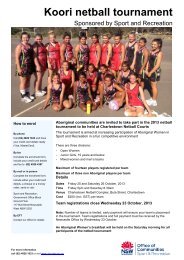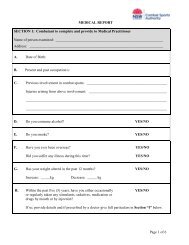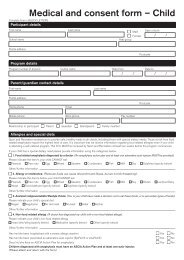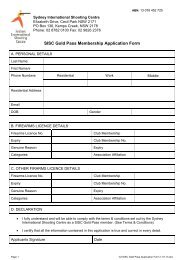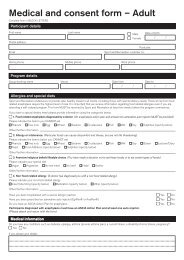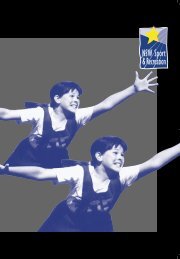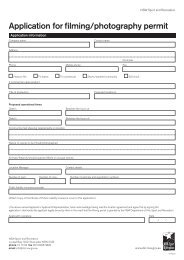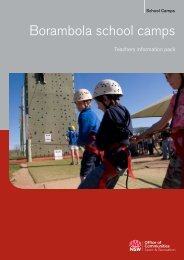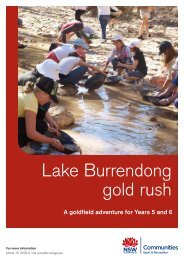Community Junior Sport Coaching final report - 2009
Community Junior Sport Coaching final report - 2009
Community Junior Sport Coaching final report - 2009
You also want an ePaper? Increase the reach of your titles
YUMPU automatically turns print PDFs into web optimized ePapers that Google loves.
analysis involved transcribing the data before coding individual comments into categories<br />
determined by the themes revealed during the analysis.<br />
Ensuring Validity and Reliability<br />
Ensuring for validity and reliability is a fundamental requirement of any research (Campbell &<br />
Stanley, 1966). However, a number of researchers have commented on the difficulty of ensuring the<br />
validity and reliability of the instruments used in this type of research (Eisner, 1997; Wallen &<br />
Fraenkel, 2001). Nevertheless, it was important to ensure that some confidence could be placed in<br />
the findings of the current research by attending to the validity and reliability of the research<br />
procedures.<br />
A number of techniques and measures have been discussed throughout this chapter to ensure that<br />
the validity and reliability of the methodology used, inferences made, and conclusions drawn from<br />
this research study are not only appropriate, but also consistent over time. A summary of these<br />
procedures can be seen below in Table 3-2.<br />
Table 3-2 Procedures to Ensure Validity in the Project<br />
Procedure<br />
Use of structural corroboration, by the use of<br />
multiple sources of data (Eisner, 1997; Guba,<br />
1981; LeCompte & Goetz, 1984; Miles &<br />
Huberman, 1994; Tashakkori & Teddlie, 1998;<br />
Wallen & Fraenkel, 2001).<br />
Collection of referential materials, e.g.,<br />
documents, audio recordings and other ‘slice-oflife’<br />
data items against which findings can be<br />
tested (Eisner, 1997; Guba, 1981; Wallen &<br />
Fraenkel, 2001).<br />
Consensual validation, or agreement among<br />
other researchers that the description and<br />
interpretation of the research are right (Eisner,<br />
1997; Guba, 1981; LeCompte & Goetz, 1984).<br />
Checking for researcher effects (LeCompte &<br />
Goetz, 1984; Miles & Huberman, 1994; Wallen &<br />
Fraenkel, 2001).<br />
Obtaining confirmatory feedback from the<br />
informants themselves (Guba, 1981; Miles &<br />
Huberman, 1994).<br />
Implementation<br />
Triangulation of data sources, (video<br />
observations, SOFIT observations, Coach Rating<br />
Scale, pre and post session semi structured<br />
interviews).<br />
Interviews, audio recordings and resource sheets.<br />
Review of research procedures at committee<br />
meetings prior to the research being conduct,<br />
research instruments being used in similar<br />
environments.<br />
Low profile adopted by researchers; data<br />
collection was as unobtrusive as possible.<br />
Particularly in the pre and post session semi<br />
structured interviews where coaches were asked<br />
to identify the physical activity levels of their<br />
players<br />
Combining the validity and reliability procedures shown in Table 3-2 has increased the reliability and<br />
validity of the research, adding to the robustness of the research.<br />
<strong>Junior</strong> <strong>Community</strong> <strong>Coaching</strong> Report December <strong>2009</strong> 27



